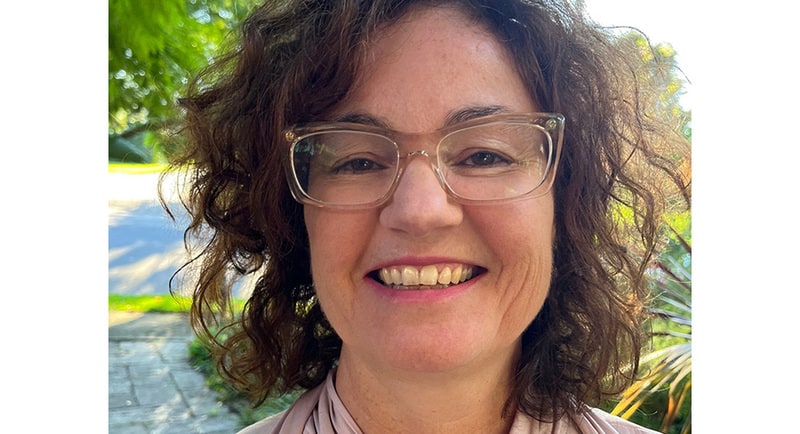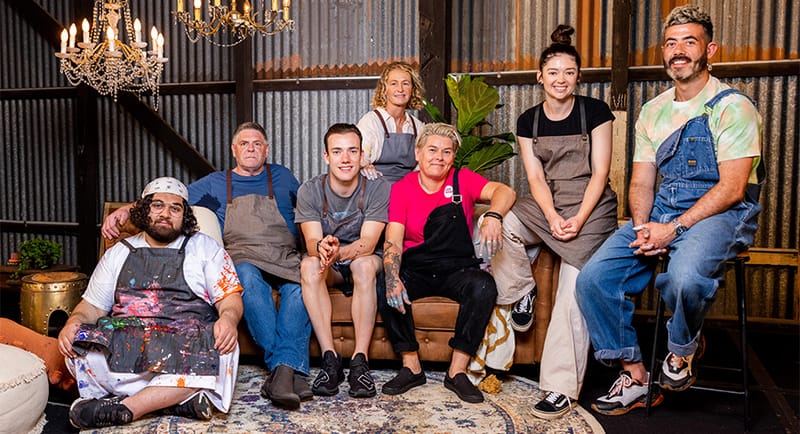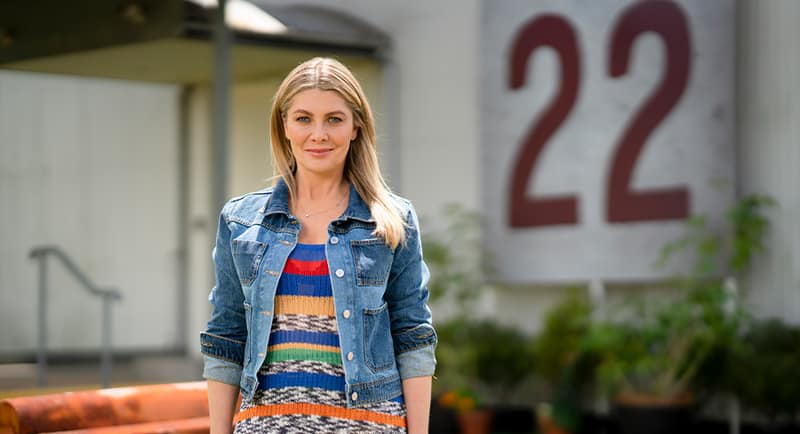Amidst Australia’s worsening mental health crisis, Space 22 looks at the growing call for art as a social prescription to support mental health care.
The six-part documentary series explores the impact art and creativity can have on mental health, and premieres on Tuesday 17th May at 8pm on ABC TV and ABC iview.
Mediaweek spoke to host Natalie Bassingthwaighte and BBC Studios EP Anita Jorgensen about putting the show together and the impact that art can have.
Space 22 is the first locally created original show for BBC Studios Australia, as opposed to something that is based on an existing UK format. Jorgensen says the team didn’t waste any time when it came to getting stuck into difficult topics.
“It’s just such a meaty topic that so deserves some attention from a different perspective.
“When we know mental ill health statistics in Australia are so dire, and then you match that with the access issues – it can often take up to six months if you are struggling with mental ill health to actually get into a psychologist for help, and if you’re in the country it’s even longer.”

Anita Jorgensen
Once the series was greenlit, they needed to find a host. Bassingthwaighte wasted no time in signing on.
“Over the past 20 years, I’ve had my own mental health struggles. I feel like I’m in a really great place at the moment, but it definitely hasn’t been without its challenges.
“It was the middle of last year, and I had this email from my manager about the show, and I said, ‘Oh, my gosh, I have to do this. Yes, my answer is yes’. The more I thought about it, the more I felt like I really needed to be a part of this series.”
While the show had to deal with lockdowns and Covid restrictions during filming, Jorgensen says the Space 22 team worked hard to turn it into a positive, making the space as welcoming as possible.
“We faced the same obstacles that any productions around that time had in terms of making sure everyone was safe and tested. We had a couple of people on our crew that had particular immunity concerns.
“It was quite a small, intimate team, and we really made sure that we created a space that everyone felt safe in. That was a big part of it – we wanted them to walk into the shed and feel like they just walked into a safe cocoon.”
As mental illness doesn’t discriminate, finding the participants for the show required finding people from all sorts of backgrounds and demographics. Thankfully, Jorgensen says the team had some help.
“To find the cast, the Black Dog Institute networks came into play. We were able to circulate the experiment amongst their network.
“Because it touches so many different people through so many ages and life situations, we wanted our cast to be broad. The other challenge was to find people that would come willing to give anything a try.
“Interestingly enough, we were actually screening in for mental illness rather than the usual screening out of our cast, which they thought was hilarious.”
Whilst the producers may have collected a lot of information about the participants going in, Bassingthwaighte says she took a different approach.
“Meeting them on the first day, I definitely got a sense of different people’s energies and some of the issues that they face.
“I deliberately didn’t go in there wanting to know too much about their backstory or what had affected them, because I felt like it was really important for them to come out in their own spaces and feel comfortable. We just kept reminding them that this is a safe space, and whatever you want to share, you can, and whatever you don’t, that’s fine.”
Jorgensen says there was one common thread amongst all of the participants, however.
“The transformation that we witness, you can’t explain to people. I’ve never seen anything like it, and I kept pinching myself to make sure that I wasn’t imagining it.”
The participants are supported throughout the experiment by psychotherapist Noula Diamantopoulos, who Bassingthwaighte says gave invaluable advice.
“Noula gave this perspective on mental health which was just a real eye-opener. She’s an angel, so nurturing and supportive, but she gave us really good techniques to really remind yourself where you are in the moment.”
Hosting three separate workshops are mixed media artist Abdul Abdulla, Archibald winner Wendy Sharpe, and performing legend Eddie Perfect.
“The three of them showcased that there are different techniques that we can use, and not everything works for everyone,” says Bassingthwaighte. “That was the beauty, I think, of trying three different mediums, because there were some parts where some people said ‘this is just not working for me.’”

Space 22 participants
Overall, Jorgensen hopes that the effects of Space 22 will be felt long after the final credits roll.
“Our hope is that you will ultimately be able to go to your GP if you’re not feeling very good and instead of them saying to you ‘here’s a prescription for medication’, or ‘here’s a prescription to go and talk to a psychologist, they can also look in their computer and see that there’s green therapy down the road. They can say ‘here are 10 sessions of green therapy’, ‘here are 10 sessions of pet therapy’, or ‘here are 10 sessions of art therapy’, just as an alternative.
It might take work to find a particular art therapy that works for you, but Bassingthwaighte says that no matter what the road is like, it’s worth it.
“I’ve known for a few years now that there are different things that work for us. For me, I do meditation and I make sure my feet are on the grass, but looking back I have made puzzles, and gotten clay out, and painted or drawn or coloured in. Those are what we’re talking about here, those moments are things that you can lean on when you’re having an anxiety attack, or there’s something going on in your world.
“I just think that if you’re struggling, it feels a bit like you don’t really know where to go or what to do. But there are different things for different people – just keep trying to find that one thing for you, because it can change your whole life.”
